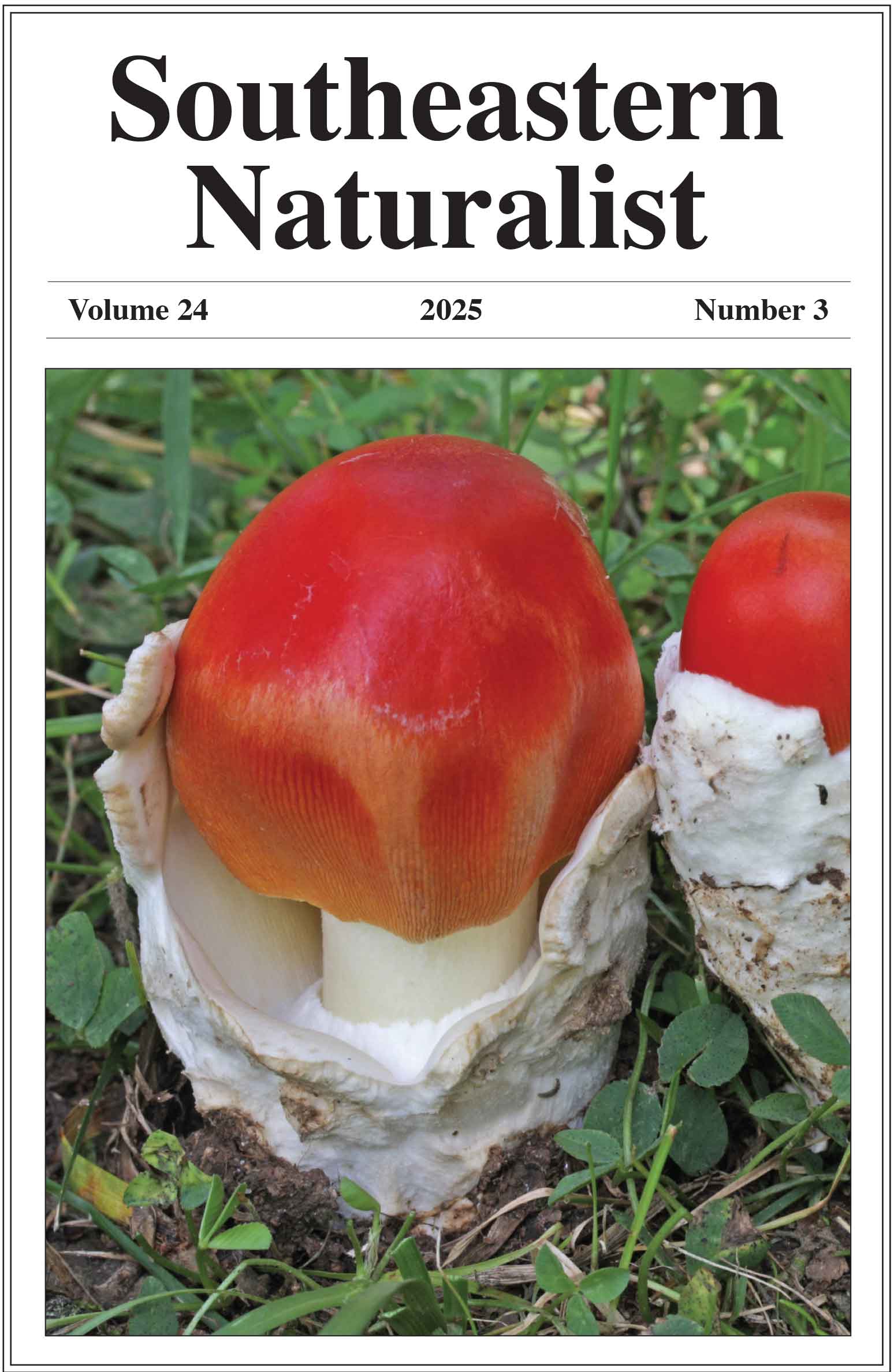Maximum Size and Longevity in Pygmy Rattlesnakes (Sistrurus miliarius): The Importance of Field Data
Jenna N. Palmisano1,*, Jasmine H. Kesselring1, Tara Morgan1, Peter G. May2, and Terence M. Farrell2
1Department of Biology, University of Central Florida, Orlando, FL 32816. 2Department of Biology, Stetson University, DeLand, FL 32723. *Corresponding author.
Southeastern Naturalist, Volume 23, Issue 4 (2024): N82–N84
First published early online: 4 December 2024
Abstract
Information on snake size and longevity often relies on captive individuals, potentially skewing perceptions of these metrics compared to wild counterparts. In this note, we address this disparity by presenting field data on Sistrurus miliarius (Pygmy Rattlesnake) from long-term studies in Central Florida and more recent statewide surveys. The largest individual we found had a snout–vent length of 65.7 cm, total length of 74.9 cm, and mass of 174 g, which is far smaller than captive snakes. Longevity assessments based on recapture intervals indicate maximum ages are significantly lower than those observed in captivity. These findings underscore the importance of using field-derived data to accurately portray the size and lifespan of wild snakes, distinct from captive environments where growth and survival conditions differ markedly.
![]() Download Full-text pdf (Accessible only to subscribers. To subscribe click here.)
Download Full-text pdf (Accessible only to subscribers. To subscribe click here.)
Access Journal Content
Open access browsing of table of contents and abstract pages. Full text pdfs available for download for subscribers.
Issue-in-Progress: Vol. 24( 4) ... early view
Check out SENA's latest Monograph and current Special Issue in progress:













 The Southeastern Naturalist is a peer-reviewed journal that covers all aspects of natural history within the southeastern United States. We welcome research articles, summary review papers, and observational notes.
The Southeastern Naturalist is a peer-reviewed journal that covers all aspects of natural history within the southeastern United States. We welcome research articles, summary review papers, and observational notes.